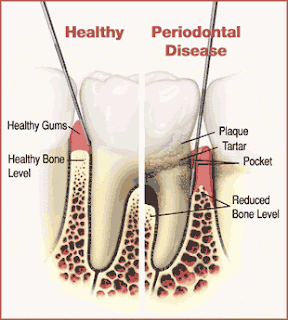Why Are My Teeth Sensitive?
Tooth sensitivity is caused by the movement of fluid within tiny tubes located in the dentin (the layer of tissue found beneath the hard enamel that contains the inner pulp), which results in nerve irritation. When the hard enamel is worn down or gums have receded, causing the tiny tube surfaces to be exposed, pain can be caused by eating or drinking foods or hot or cold beverages, touching your teeth, or exposing them to cold air.
Exposed areas of the tooth can cause pain and even affect or change your eating, drinking, and breathing habits. Taking a spoonful of ice cream, for example, can be a painful experience for people with sensitive teeth. The excessive consumption of acid-containing foods and beverages, such as citrus juices and fruits and soft drinks, can also put you at risk for tooth sensitivity. Bulimia and acid reflux can also result in erosion of the hard enamel and sensitivity due to acid in the mouth.
Is tooth sensitivity a common condition?
Tooth sensitivity is one of the most common complaints among dental patients. At least 40 million adults in the United States suffer at some time from sensitive teeth.
How can I avoid sensitivity?
Some toothpastes contain abrasive ingredients that may be too harsh for people who have sensitive teeth. Ingredients found in some whitening toothpastes that lighten and/or remove certain stains from enamel and sodium pyrophosphate, the key ingredient in tartar-control toothpaste, may increase tooth sensitivity.
What can I do about sensitive teeth?
Tooth sensitivity can be reduced by using a desensitizing toothpaste; having your dentist apply sealants and other desensitizing and filling materials, including fluoride; and decreasing the intake of acid-containing foods. Using tartar-control toothpaste will sometimes cause teeth to be sensitive as well as drinking soft drinks throughout the day, so these habits should be avoided.
Avoid using hard-bristled toothbrushes and brushing your teeth too hard, which can wear down the tooth's surface and expose sensitive spots. The way to find out if you're brushing your teeth too hard is to take a good look at your toothbrush. If the bristles are pointing in multiple directions, you're brushing too hard.
How do I know when it's time to see a dentist?
If a tooth is highly sensitive for more than three or four days and reacts to hot and cold temperatures, it's best to get a diagnostic evaluation from your dentist to determine the extent of the problem. Before taking the situation into your own hands, an accurate diagnosis of tooth sensitivity is essential for effective treatment to eliminate pain. Because pain symptoms can be similar, some people might think that a tooth is sensitive, when instead, they actually have a cavity or abscess that's not yet visible.
Do some products help decrease sensitivity?
Toothpaste for sensitive teeth usually contains a desensitizing agent that protects the exposed dentin by blocking the tubes in the teeth that are connected to nerves. In most cases, these products must be used on a regular basis for at least a month before any therapeutic benefits may be noticed.
What can the dentist do for my sensitive teeth?
Dentists have a variety of regimens to manage tooth hypersensitivity, including both in-office treatments and patient-applied products for home use. If you are diagnosed with dentin hypersensitivity, your dentist may apply a desensitizing agent or a protective coating. You may be prescribed a stannous fluoride gel or an over-the-counter desensitizing toothpaste containing fluoride and either potassium nitrate or strontium chloride. These ingredients help block the transmission of sensation from the tooth to the nerve. It also might help to massage the special paste onto your gums with your finger after brushing.
What should I do after the dentist has applied a desensitizing agent?
Listen closely to your dentist's instructions. He or she may advise you not to eat or drink for a short period of time to eliminate all sources of irritation, such as acidic foods, medication, or flavored toothpastes. You may also be instructed to change oral hygiene habits that are likely to cause abrasion or use a daily fluoride application (a rinse or brush-on gel).

